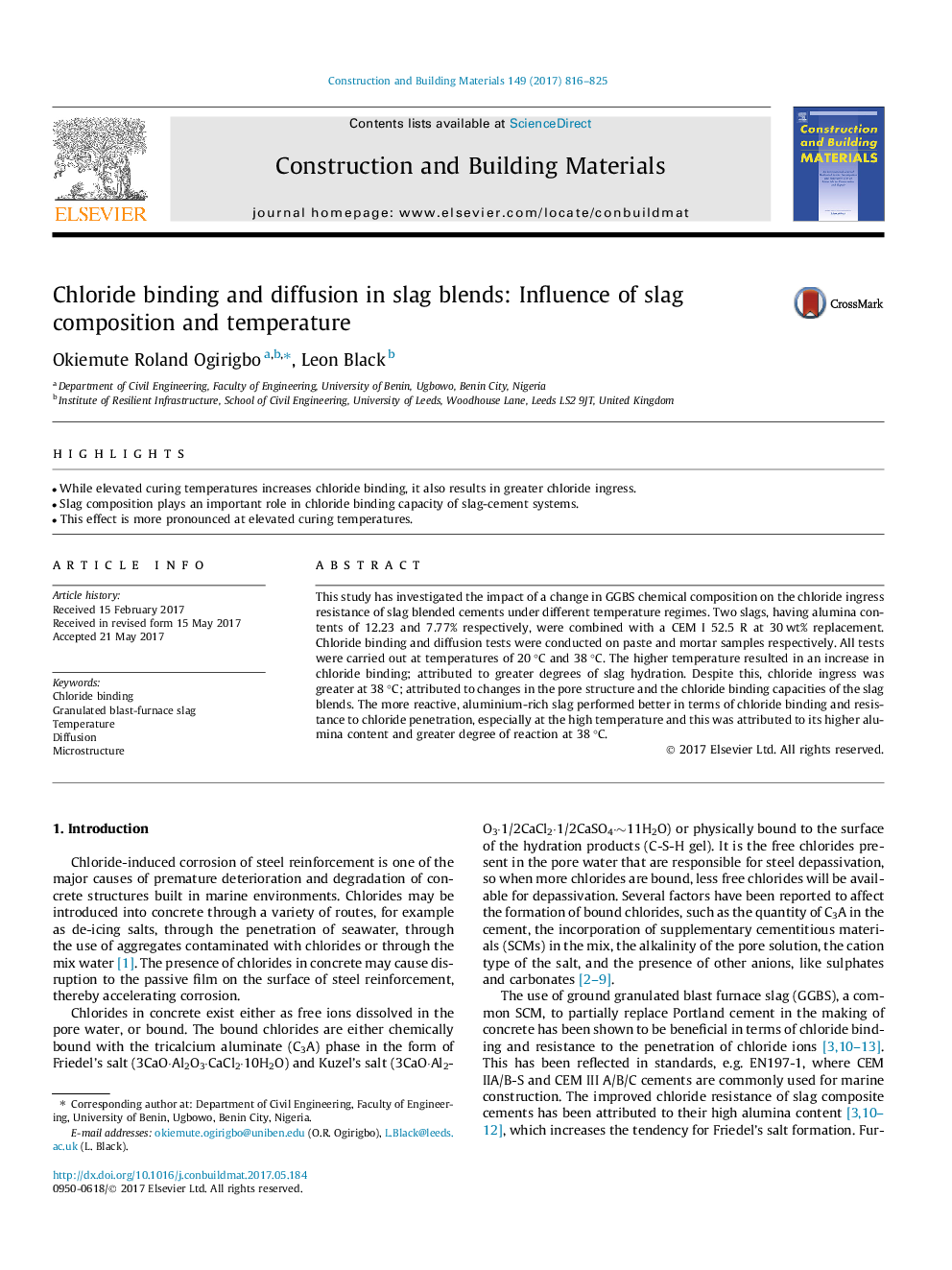| Article ID | Journal | Published Year | Pages | File Type |
|---|---|---|---|---|
| 4913122 | Construction and Building Materials | 2017 | 10 Pages |
Abstract
This study has investigated the impact of a change in GGBS chemical composition on the chloride ingress resistance of slag blended cements under different temperature regimes. Two slags, having alumina contents of 12.23 and 7.77% respectively, were combined with a CEM I 52.5 R at 30 wt% replacement. Chloride binding and diffusion tests were conducted on paste and mortar samples respectively. All tests were carried out at temperatures of 20 °C and 38 °C. The higher temperature resulted in an increase in chloride binding; attributed to greater degrees of slag hydration. Despite this, chloride ingress was greater at 38 °C; attributed to changes in the pore structure and the chloride binding capacities of the slag blends. The more reactive, aluminium-rich slag performed better in terms of chloride binding and resistance to chloride penetration, especially at the high temperature and this was attributed to its higher alumina content and greater degree of reaction at 38 °C.
Related Topics
Physical Sciences and Engineering
Engineering
Civil and Structural Engineering
Authors
Okiemute Roland Ogirigbo, Leon Black,
